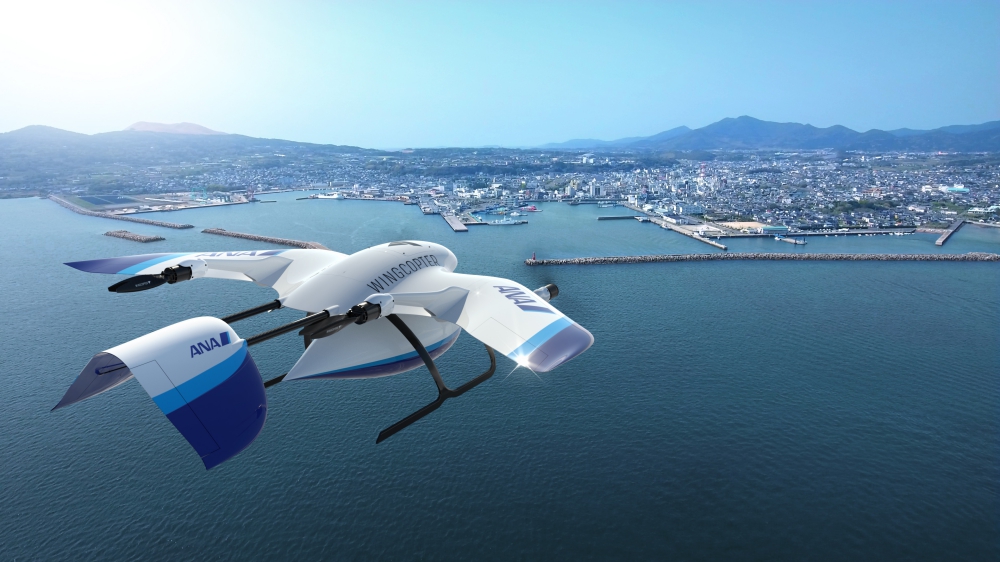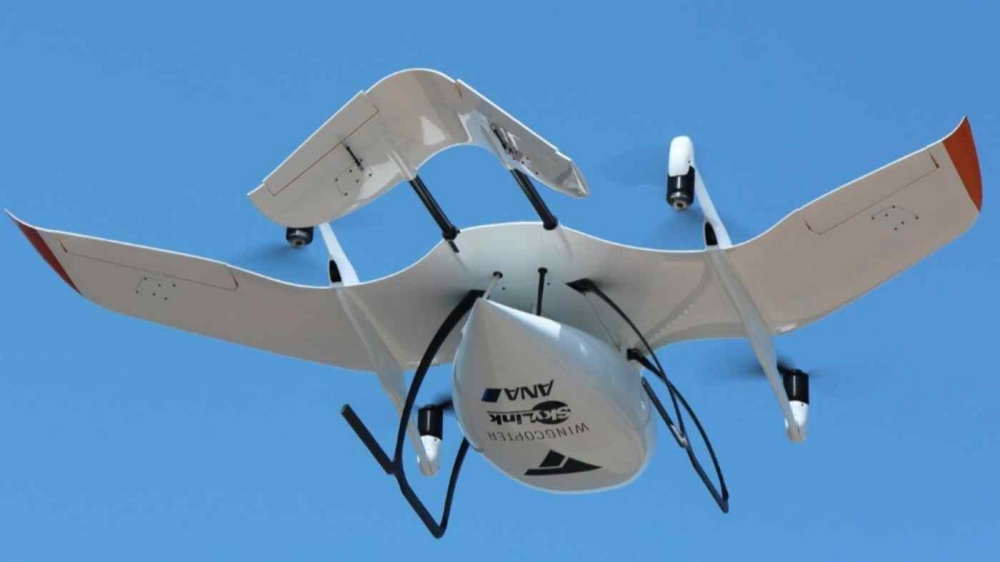Japanese airline group ANA Holdings will launch a drone delivery service in the fiscal year through March 2023, using a vehicle developed by a German startup to carry daily necessities and medicines to Japan’s remote islands and mountainous regions.
ANA is preparing the service as the Japanese government takes steps toward relaxing drone regulations sometime in the same fiscal year. It will be the first time for a domestic airline to start a drone transportation service.
ANA’s German supplier is Hessen-based Wingcopter. The startup’s drones can maintain a maximum speed of 240 kph over 120 km, more than 10 times farther than general-purpose drones.
ANA HD has a history of innovation in autonomous technology, testing advanced prototype baggage loaders and towing tractors at Saga Airport. In 2016, ANA HD began to lay the framework for its drone transportation infrastructure, with the aim of fully commercializing drone delivery services by 2022. Drone delivery trials have been conducted in Japan since 2018, and the first flights with Wingcopter aircraft took place in 2019. Also in 2019, ANA HD signed an MOU with Zambia Government to conduct similar field tests with drones to improve the delivery of medical supplies in Zambia.
The first phase of the current tests took place between March 21-26, with the supervised flight of a Wingcopter aircraft between Fukuejima and Hisakajima in Goto City, Nagasaki Prefecture. The flights demonstrated the viability of drone delivery for medical supplies, dramatically reducing patients’ waiting times. In this remote region of Japan, it is difficult to quickly transport medical supplies due to poor infrastructure. This has created problems for public health officials and medical professionals looking to rapidly respond in situations where time is a key factor in treatment.
“The ongoing tests of Wingcopter aircraft represent a significant step forward in the creation of a viable drone transportation network,” said Tetsuya Kubo, Vice President of ANA HD overseeing the Digital Design Lab. “We are excited to partner with Wingcopter as we build on the advances and innovation of previous trials to bring drone delivery one step closer to reality. Once fully realized, a functioning drone transportation infrastructure will help improve quality of life in rural areas across Japan.”
“Being able to help a global company like ANA open up new business areas and at the same time pursue our mission to save and improve lives, is what we tirelessly work for,“ adds Tom Plümmer, CEO of Wingcopter. “We are really looking forward to the next steps and the overall partnership with ANA in Japan and beyond.”
The ongoing trials will help ANA HD determine which aircraft are suited to operate best in each region of the country, evaluating local weather conditions and demand for drone delivery, as it establishes a series of hubs along the transportation network.
Moving forward, ANA HD will continue to innovate and embrace new technologies as it looks for ways to leverage its network and assets to better serve the communities in which it operates.
In March, the government approved a bill to amend the Aviation Law, which includes expanded airspace and fewer regulations for drones. In fiscal 2022, the government is expected to allow drones to be flown out of the operator’s sight in densely populated areas. ANA will prepare for commercialization based on this so-called “level 4” flying standard.
Even after drone flying is deregulated, only government-certified aircraft and qualified operators will be allowed to fly drones in populated areas. ANA sees this as an advantage for airlines.
Drones are being employed for more jobs, such as inspecting infrastructure and transporting goods. According to Tokyo-based Impress Research Institute, the domestic logistics market for drone services is expected to grow from 1.5 billion yen ($137 million) in fiscal 2019 to 79.7 billion yen in fiscal 2025.
In Japan, logistics companies have been quick to adopt drones due to their trouble in finding enough truck drivers. In April, Seino Holdings began operating a transport drone on a full-time basis in a Yamanashi Prefecture village.
Sources: Press Release; Nikkei Asia


